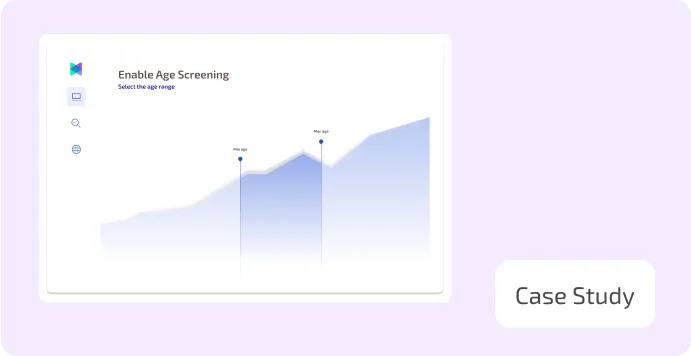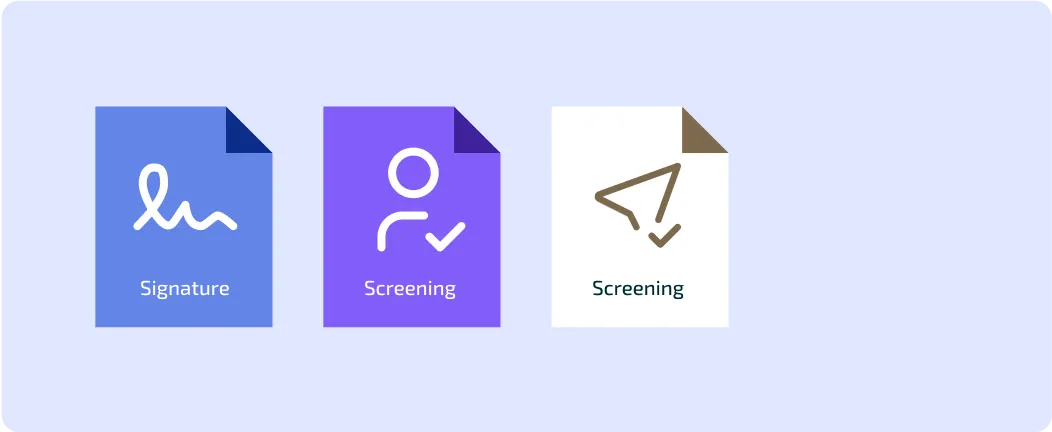.webp)
Published on
June 24, 2025
AML Beneficial Ownership Checks for Risk and Compliance
.png)
Accelerate AML Compliance: Meet Regulatory Demands with 80% Less Setup Time
.svg)
.svg)
Beneficial ownership refers to the real person(s) who ultimately owns or controls a company, even if the ownership is hidden behind another legal structure (such as a trust or shell company). It is crucial for AML (Anti-Money Laundering) efforts because criminals often use complicated ownership structures to hide their identity and launder illicit money.
In AML compliance, financial institutions must identify who really controls or benefits from a company to prevent financial crimes like money laundering and terrorist financing.
How Beneficial Ownership Is Identified
- Direct Ownership: A person who owns a significant percentage (usually over 25%) of a company’s shares is a beneficial owner.
- Indirect Ownership: If a person controls the company through other entities, they are still considered the beneficial owner.
- Control by Other Means: A person might be considered the beneficial owner if they control decisions like who runs the company, even without owning shares.
Example:
XYZ Bank is reviewing an application from Oceanic Trading Ltd., a company that wants to open a business account. The company is based in a tax haven, and its ownership structure is unclear.
Step-by-Step Breakdown:
1. Initial Screening
The company’s application lists John as the director, but it doesn’t say who actually owns the company or controls it.
The company claims to import and export electronics, but John doesn't provide full information about ownership.
2. Red Flags Identified
- XYZ Bank's compliance system flags the company due to its registration in a high-risk jurisdiction.
- Further research shows that John is connected to multiple offshore companies.
- The ownership structure looks complex, and it’s difficult to identify the true owner.
3. Enhanced Due Diligence (EDD)
- XYZ Bank digs deeper and finds that John is acting as a nominee director for a group of individuals in another country.
- The real beneficial owners are three individuals who control over 60% of the company. One of them is linked to money laundering investigations.
4. Bank's Decision
- Due to the findings, XYZ Bank rejects the account application and files a Suspicious Activity Report (SAR) with local authorities.
- The bank avoids potential legal and reputational risks by not engaging with the high-risk company.
Key Takeaways:
- Beneficial ownership checks are critical for banks to identify who really controls a company.
- Complex ownership structures are a red flag and require deeper investigation to prevent financial crimes.
- Identifying the true owners helps financial institutions stay compliant and avoid legal trouble.
Streamline Compliance: Achieve 80% Faster Setup for Fraud Prevention
.svg)
.svg)

How Aseel reduced onboarding time by more than 87% using FOCAL
Learn how FOCAL empowered Aseel to achieve new milestones.


Mastering Fraud Prevention: A Comprehensive Guide for KSA and MENA Businesses
51% of organizations fell victim to fraud in the last two years, don't be caught off guard, act proactively.


Featured blog posts

.png)
AML Beneficial Ownership Checks for Risk and Compliance
Learn how identifying beneficial ownership helps banks detect hidden control structures used for money laundering, fraud, and other financial crimes.
.webp)
.png)
AML Beneficial Ownership Checks for Risk and Compliance
Learn how identifying beneficial ownership helps banks detect hidden control structures used for money laundering, fraud, and other financial crimes.
.webp)
.png)
AML Beneficial Ownership Checks for Risk and Compliance
Learn how identifying beneficial ownership helps banks detect hidden control structures used for money laundering, fraud, and other financial crimes.
.webp)





AI-Driven Precision in Fraud Risk and AML Compliance



.svg)
.png)





.svg)

_FastestImplementation_Small-Business_GoLiveTime.png)

_HighPerformer_Small-Business_HighPerformer.png)
_Leader_Leader.png)



%20(1).webp)